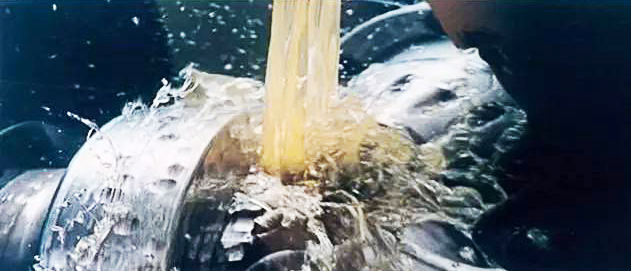Due to its good cooling and lubrication performance, excellent operating environment and low production cost, water-soluble cutting fluid is favored by many machining customers and occupies a high proportion in the current market application. However, due to the characteristics of its own products, many problems will appear in daily use, especially the problem of deterioration and odor, causing headaches for many customers.

Why does the workshop stink?
Cutting fluid metamorphism refers to oxygen consuming bacteria living in a mineral environment, such as water, concentrate of cutting fluid and oil leaking from machine tools, splitting into two parts every 20 to 30 minutes under aerobic conditions. Anaerobic bacteria, on the other hand, live in an oxygen-free environment, and divide into two parts per hour. The metabolism releases SO2, which smells of rotten eggs and darkens the cutting fluid. When the bacteria in the cutting fluid is greater than 106, the cutting fluid will stink.
Bacteria enter the cutting fluid mainly through the following channels:
- Bacteria invade during preparation, as in the water in which cutting fluids are prepared.
- Bacteria from the air enter the cutting fluid.
- The transfer of the workpiece between processes results in an infection of the cutting fluid.
- The operator’s bad habits, such as littering.
- Poor cleanliness of machine tools and workshops.
Methods of controlling bacterial growth:
- Use high quality and stable cutting fluids.
- When the concentrate is prepared with pure water, it is not only easy to prepare, but also improves the lubricity of the cutting fluid, reduces the amount taken away by chips and prevents bacterial erosion.
- When used, control the concentration ratio of the cutting fluid should not be too low, otherwise the bacteria can easily grow.
- As the oil used by the machine tool contains bacteria, it is necessary to minimize the oil leakage from the machine tool into the cutting fluid.
- When the pH value of cutting fluid is between 8.3 and 9.2, the bacteria cannot survive, so new cutting fluid should be added in time to increase the pH value.
- Keep the cutting fluid clean and do not allow it to come into contact with dirt such as oil, food and tobacco.
- Use fungicides frequently.
- Keep workshop and machine tools clean.
- If there is no filter equipment, the equipment should be regularly skimmed to remove oil slick, dirt removal.